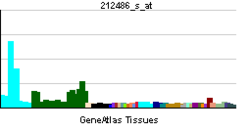Hollywood, Florida — The National Comprehensive Cancer Network (NCCN) has issued new treatment guidelines for penile cancer.
"The first thing people ask me is why develop guidelines for such a
rare cancer," said Philippe E. Spiess, MD, genitourinary oncologist at
the H. Lee Moffitt Cancer Center in Tampa, Florida.
In 2010, an estimated 1250 new cases of penile cancer were diagnosed
in the United States and there were about 310 related deaths. Penile
cancer accounts for 0.4% to 0.6% of all malignant neoplasms in the
United States and Europe.
Dr. Spiess presented highlights of the guidelines here at the NCCN 18th Annual Conference.
There is a high degree of heterogeneity in the way penile cancer is
treated in North America and globally, he explained. "The standard of
care remains complete tumor excision and eradication of negative
margins."
However, there has been increasing consideration of less or
noninvasive management of primary penile tumors, based on stage and
grade, he added.
Less and Noninvasive Therapy
For carcinoma in situ and superficial verrucous carcinoma, a British
study showed that 5-fluorouracil or imiquimod produced response rates of
60% to 70% at 5 years (
World J Urol. 2009;27:179-187). In this setting, CO
2 and Nd:YAG laser ablation can also be used, although retreatment rates are quite high (about 20% to 30%), explained Dr. Spiess.
Total gland resurfacing and wide local excision with circumcision are also options.
There is some evidence for the use of topical therapies. In a recent
retrospective review of all primary and recurrent cases of penile
carcinoma in situ treated with topical 5-fluorouracil and imiquimod over
a 10-year period (
Eur Urol. 2012;62:923-928), "the response
rates were excellent," said Dr. Spiess. "A complete response was seen in
57% of the patients, with a partial response in 14%."
No response was seen in the remaining 29.5% of patients, but none of
the patients recurred or progressed. Toxicity was also low; 10% of
patients reported local toxicity and 12% reported an adverse event.
Another study, looking at penile-preserving surgery for patients with
penile Tis and PT1 tumors, found that there was a recurrence rate of
21.4% in both subgroups (
J Urol. 2011;186:1303-1307). At 5
years, 13.8% of patients had a late recurrence, but none of the patients
with pTis tumors had progressed to invasive or metastatic disease.
"These patients can recur fairly late, so it is important to follow them for at least 10 years," Dr. Spiess pointed out.
"As far as penile-preserving therapy, the take-home message is that
clinical stage is everything," Dr. Spiess explained. However, he went on
to emphasize that "it has to be a patient with a small superficial
lesion, where you can obtain negative margins. If you can't, then you
need to look at more radical options in surgery."
Another treatment option is brachytherapy. A recent French study
found a 10-year penile recurrence rate of 20% and a 10-year inguinal
recurrence rate of 11% (
Int J Radiat Oncol Biol Phys.
2009;74:1150-1156). However, "centers of excellence that have experience
with penile brachytherapy are few and far between," he cautioned.
"That's why the guidelines...are somewhat cautious in making
recommendations until we see a wider experience using penile
brachytherapy."
He emphasized the importance of stringent surveillance after
radiotherapy to the penis; up to 40% of patients who receive radical
radiotherapy will eventually need surgery for disease recurrence.
Surgery in this population can be challenging because irradiated tissues
are brittle and poorly vascularized, making them less than ideal for
grafting.
Sentinel Node Biopsy
Dr. Spiess discussed the concept of sentinel lymph node biopsy in
penile cancer, which was proposed more than 30 years ago. One study
reported a false-negative rate of 18% using a combined preoperative
injection of technetium-99m labeled sulfur colloid and isosulfan blue
dye (
J Urol. 2002;168:76-80).
A more recent prospective study found a sensitivity of only 71%, with 2 false-negative results reported (
J Urol.
2007;177:2157-2161). But a review found that false-positive results can
be minimized with preoperative ultrasound and fine-needle aspiration
cytology on suspicious nodes (
World J Urol. 2009;27:197-203).
However, this technique has not yet been embraced in this setting.
"We are somewhat cautious about promoting this technique, although
clearly it is something very interesting and something that can be used
at a center that has high expertise in sentinel lymph node biopsy," said
Dr. Spiess. "At this point, it is not being widely used in North
American centers."
National Comprehensive Cancer Network (NCCN) 18th Annual Conference.








